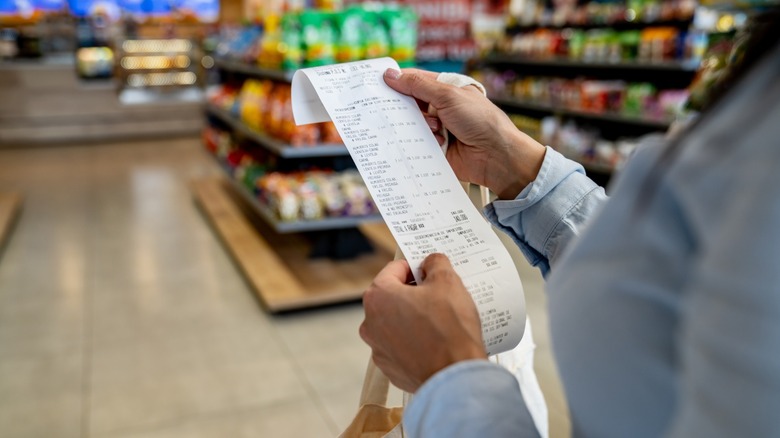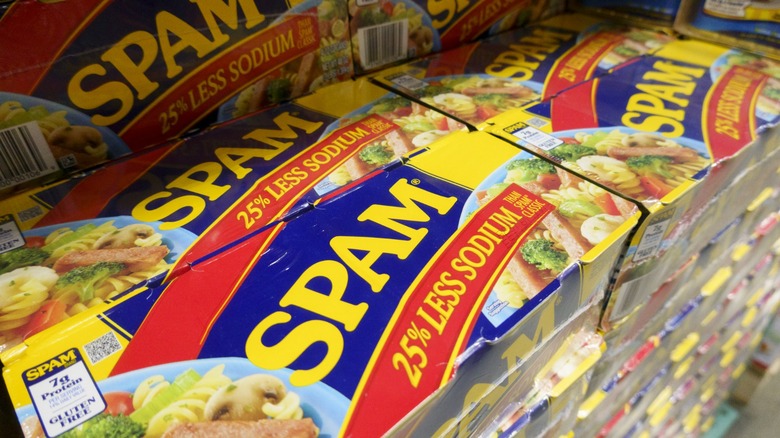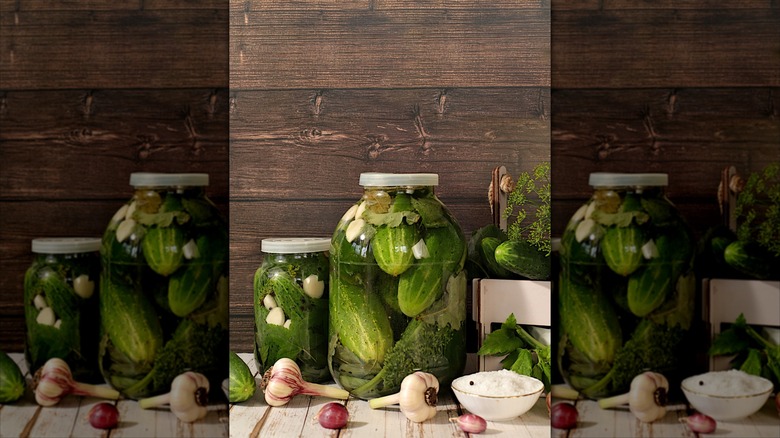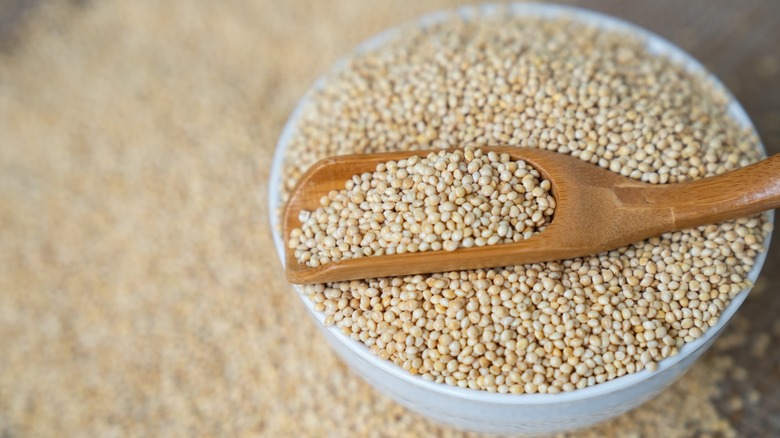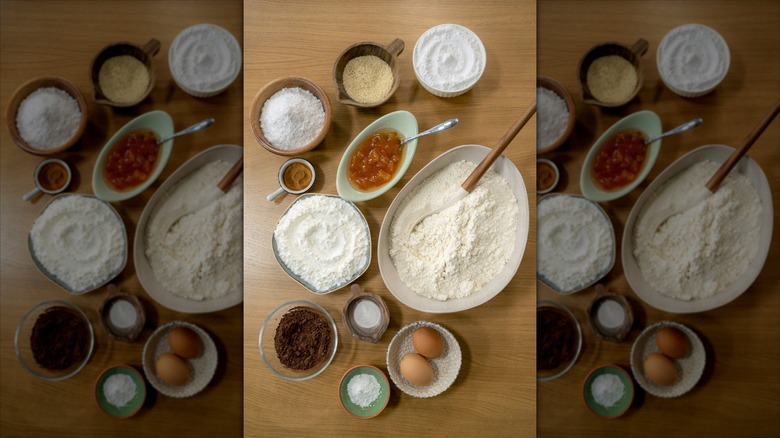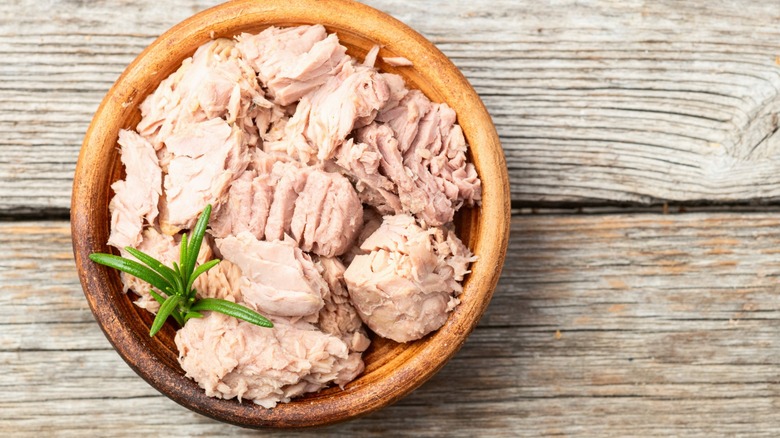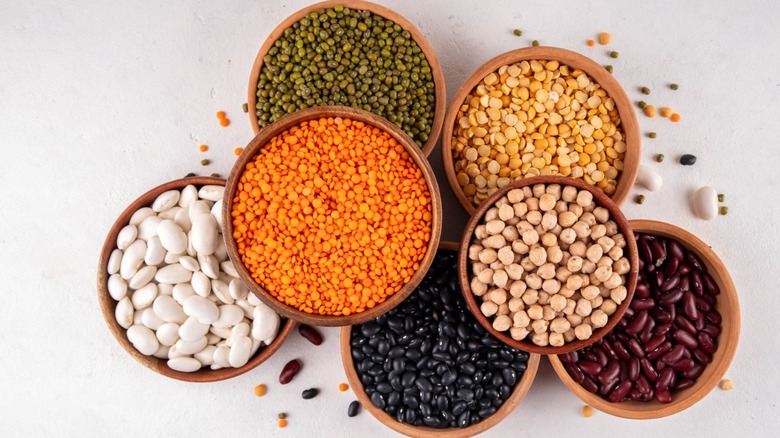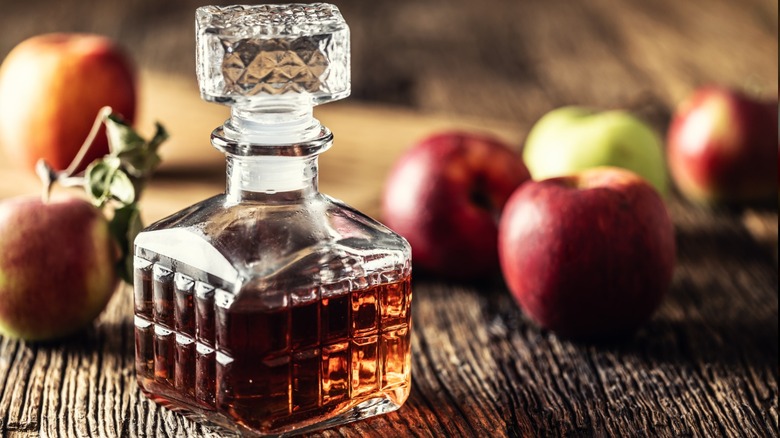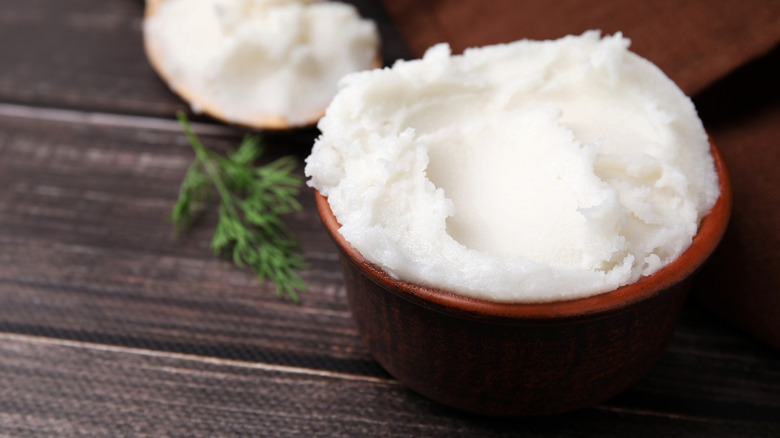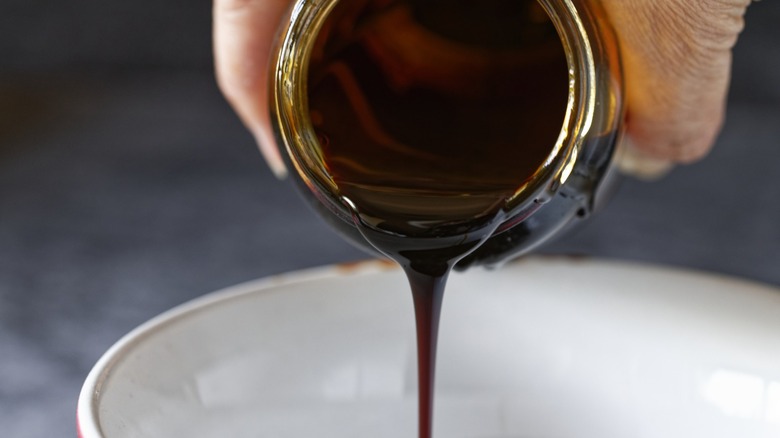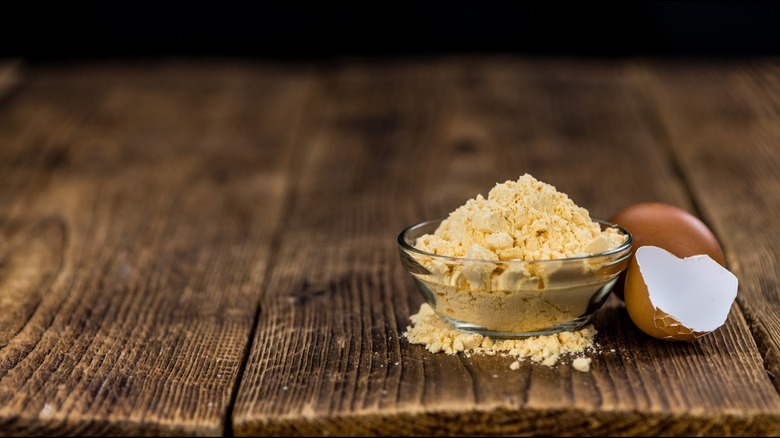Old-School Grocery Items That Are Making A Comeback Because Of Inflation
Grocery bills are pinching household budgets, and Americans are quietly returning to pantry stalwarts once written off as relics. It's not because we're suddenly sentimental about grandma's canned meat stash, but more because these old-school foods actually deliver what we now need most, but at a cheaper price. They stretch a paycheck, last nearly forever, and sometimes serve more than one purpose in the pantry.
Thanks to inflation, those trips to the supermarket are starting to feel more like an episode of "Survivor" than "Martha Stewart's Living." There you are, standing in aisle five, wondering if you should buy the fresh chicken or just settle for that can of Spam that could´ve been perched on that shelf since 1930.
You're not alone. Data and social media trends show shoppers heading back to the basics: Vinegar that doubles as both salad dressing and kitchen cleaner. Powdered milk now sliding back into your pancake mix. Pickles being canned, because maybe you just don't want any of that food to go to waste. It's painful out there. So painful that items we thought we'd left behind are staging an unexpected comeback tour. Here's the grocery aisle time machine of old-school staples to add to your list. You got this.
Canned and processed meats
There was a time when Spam was the punchline of a bad sitcom, something lurking in the back of the pantry to last you until the end of days down in a bunker somewhere. But here we are in 2025, and it's not just back, it's moving units like it's 1942. According to Reuters, grocery executives in New York have reported double-digit sales jumps of canned and processed meats in particular, with stores dusting off entire displays of Chef Boyardee products, canned corned beef, and of course, Spam.
The logic of this uptick is simple: Fresh meat is expensive, inflation is relentless, and you can't argue with a shelf-stable hunk of protein that will wait patiently until you're ready to fry it up with rice or slap it on an aptly named po´ boy sandwich. Food conglomerates are leaning in, too. Conagra's canned-meat brands, including Vienna sausages and Manwich, are reportedly "on fire."
Social media hasn't ignored this resurgence either, with Spam creations and "depression-era meals" trending as hot topics. It's hard to imagine what has always been considered a "struggle meal" (let's be honest) now getting its day in the sun as a social media star. You go, Spam.
Jarred vegetables and pickles
The brands on the pickle aisle no longer comprise the sad little corner of the grocery store that only your grandpa shuffled toward. It's thriving and full, and not just with dill spears. You could say it's filled to the brine. Instacart reports a full-on "brine boom," with pickles and brined veggies "popping off" across U.S. regions, fueled by social media challenges and quirky recipes. What used to be the sidekick to a sandwich has become the star of the snack show, with the #pickle hashtag garnering millions upon millions of views online.
But this isn't just about taste. It's also about thrift. Pickling is one of the best ways to reduce food waste by saving produce that would otherwise spoil. Add in the DIY trend, where shoppers grab whatever veggies are on sale and pickle them at home, and you've got a movement that's equal parts frugal and fun.
Pickling advocates and health experts are even pushing the gut-health and sustainability angles, pointing out that home pickling keeps people healthier while cutting waste. So whether you're buying the big-name jars or trying your hand at delicious refrigerator quick pickles, the point is the same: Pennies saved, crunch delivered.
Powdered milk products
Powdered milk used to be the culinary equivalent of homework in that it was necessary, but joyless. Fast forward to now, and sales projections say it's heading toward nearly $14 billion in the U.S. by 2030. Why? Because it's shelf-stable, affordable, and quietly useful in more recipes than you may realize.
Milk powders are showing up in baking mixes, confections, dairy beverages, nutritional supplements, and even infant formulas, making them a surprisingly versatile player in the food world. Inflation is pushing people to stock pantry backups, and powdered milk has become a go-to for pancakes, muffins, sauces, or just emergencies when the fresh jug runs out.
While a Starbucks oatmilk honey latte might make you feel like a grown-up, the humble scoop of powdered milk is making quiet gains in households that just want to stretch grocery runs and save cash. The pandemic got many families used to stashing shelf-stable staples, and rising inflation seems to have sealed the deal. Powdered buttermilk, meanwhile, is having its own moment in home baking as a cheaper, long-lasting alternative to dairy. The kicker? What used to be a dusty box for doomsday preppers is now a mainstream inflation hack. And that street smarts shopping savvy is nothing to be sour about.
Alternative grains and flours
Alternative grains sound like something you'd only find in the bulk bins of a hippie co-op shop, but their mainstream moment has officially arrived. Shoppers have an interest in keeping ancient grains in their pantry now across the U.S., not just because they're Instagrammable in a Buddha bowl but because they're cheaper, resilient, and better for the planet. These alternative grains are growing in supply and demand, with sorghum in particular gaining traction thanks to its drought resistance and gluten-free versatility.
There's also a more recent backlash against modern wheat, with concerns about intolerances, obesity, and other health issues pushing some consumers toward older grains. The Whole Grains Council points out that ancient grains may play a crucial role in a climate-changed future food system, which makes every bowl of sorghum porridge feel like both a bargain and a statement somehow.
Inflation just accelerates the shift. When wheat prices spike, shoppers look around, and suddenly millet pancakes don't seem so mid. TikTok chefs are even leaning into it, spinning recipes around alternative grain porridges and rustic sorghum flatbreads. It kind of feels like alternative grains are turning into the unexpected understudy that steals the spotlight when the lead wheat starts to feel a little too diva.
Basic baking staples
As bread prices keep climbing and cookies from the grocery bakery case now costing more than a streaming subscription, more Americans are pulling out the flour and yeast again. According to Inc., inflation is a key driver behind the increase in home baking, with nearly 70% of consumers picking up the habit during the pandemic, and many never letting it go. A big slice of them are baking more each year, specifically because store-bought goods have gotten pricey.
Meanwhile, more meals are being made at home as grocery inflation squeezes budgets. That means baking staples like flour, yeast, and baking powder, a dusty trio that once collected cobwebs on pantry shelves, are suddenly back in heavy rotation. Even TikTok and Instagram are packed with home bakers showing off sourdough showpieces and focaccia art, proof that saving money doesn't have to be boring.
Inflation may have nudged people back into their kitchens, but baking bread can be as easy (or as difficult) as you make it. Many love creating breads, cookies, and cakes from scratch. What used to be a weekend project has become a weekday survival tactic. Cheap, versatile, and maybe even a little therapeutic, it seems basic baking is back in business.
Canned seafood products
There's something both glamorous and practical about canned fish. On one hand, you've got TikTok influencers turning sardines into chic tapas boards with crusty bread and hot sauce. On the other, you've got families stretching tuna into three lunches because groceries cost a fortune. Either way, the numbers back it up: Grand View Research found that canned seafood market was valued at $35.7 billion in 2024 and is projected to climb to $44.2 billion by 2030.
Analysts point to the convenience factor. These tins of fish are protein-packed, ready to eat, and have a shelf life that outlasts most New Year's resolutions. The cost-of-living crisis is a driver, with shoppers swapping pricey fresh fish for canned alternatives that do the job without draining the wallet.
Surprisingly, sardines are the dark-horse MVP here. Once snubbed with the shrivel of a nose and smirk, sardines are now served on sourdough in trendy bars or going viral online. Tuna is still the workhorse for sandwiches and casseroles, but the comeback of canned mackerel and anchovies adds a splash of European chic. You could say inflation has turned the all but deserted canned seafood shelf into prime grocery real estate.
Beans and other legumes
Beans have always been solid players in the pantry, but now they're stepping out of their supporting-role shadows. With meat prices climbing, beans are being rebranded from mere filler foods to meal-makers. Cognitive Market Research shows the canned beans industry was sitting at over $6.1 billion in 2024, with growth projected at more than 10% annually through 2031 — which is a very nerdy way of saying people are eating a lot of beans.
The math checks out: A can of black beans could cost less than a dollar, while a pound of chicken breast hovers around four to five times that (on a good day). That's a no-brainer swap when you're stretching a grocery budget. Nutritionally, beans aren't slouches either. They're higher in fiber, lower in fat, and versatile enough to land in soups, salads, tacos, and trendy heirloom bean recipes that foodies are suddenly obsessed with.
Beans are not only cost-effective, but also a great way to diversify nutrients without sacrificing taste. Social media adds to the momentum, with TikTok showing off "bean hacks" that somehow make canned varieties look downright glamorous. Beans have gone from sidekick to hero, and if inflation keeps acting up, America just may crown them king of the pantry.
Vinegar
Vinegar is the kind of like the Swiss Army knife of the grocery aisle, and inflation has reminded everyone of its versatile superpowers. The global vinegar market is booming, with Mordor Intelligence forecasts showing that it will grow from $7.3 billion in 2025 to more than $8.6 billion by 2030. The reason is simple. It's cheap, versatile, and does double (or triple) duty. You can splash it on salads, use it to pickle veggies, clean your counters, and even drink it in trendy "health shots."
Consumer demand is growing not just for basic distilled vinegar, but also for apple cider vinegar and premium clean-label options marketed as being wellness friendly. So, kind of hilariously, the same jug your grandma kept under the sink is now showing up in fancy kombucha-inspired tonics. Vinegar's growth is tied to consumers leaning on natural, multi-use products in a budget-conscious era. It's a pantry staple that proves you don't need to spend big to cover a lot of bases in the kitchen.
Rendered animal fats
Butter may look good in all those glossy cookbook photos, but when prices spike, cooks are rediscovering the old-school fats that fed generations. Lard, tallow, and drippings are staging a comeback, partly because they're often cheaper than specialty oils and butter, and partly because they bring serious flavor to frying and baking. Lard is not only cost-effective, but also a tasty and traditional ingredient in everything from Mexican tamales to classic pie crusts.
At the same time, dairy market pressures, including fewer cows, lower production, and retail butter prices hitting highs, are pushing people to look for alternatives. Enter beef tallow fries, pork lard biscuits, and the nostalgic idea of saving bacon grease in a jar, which suddenly feels practical again. Even TikTok and expert chefs are showcasing recipes that lean into these fats not only for their economy, but also for their richness, and stability at high heat.
Beyond taste, there's a thrifty charm in reusing what would otherwise be wasted. With food inflation fanning the flames, rendered fats are shedding their "unhealthy villain" reputation and regaining respect as both budget-friendly and deeply satisfying staples. Call it old-school resourcefulness with a side of golden, crispy fries.
Molasses and old-school sweeteners
Molasses used to be the sweetener your grandmother swore by and you ignored, but inflation has given it new life. As sugar and honey prices climb, molasses stands out as a cheap, flavorful option that stretches the baking budget without sacrificing taste. Market research shows steady growth in blackstrap molasses demand, driven by interest in natural, organic, and plant-based ingredients.
At the same time, molasses is one of the least processed sweeteners available, making it both budget and health friendly. Its versatility extends beyond gingerbread cookies, with molasses able to add its own brand of magic to marinades, barbecue sauces, breads, and even recipes for fermenting.
In the South especially, sorghum syrup and treacle are also creeping back into the conversation, tied to both nostalgia and practical thrift. Home bakers are rediscovering its depth of flavor, and sustainability-minded consumers like that molasses is essentially a byproduct that would otherwise go to waste. The bonus: a little goes a long way, so a single jar can stretch for months of recipes. Inflation may have forced the comeback, but it's reminding people that old-school sweeteners still have their sugary swagger.
Powdered eggs
Fresh eggs have taken us on one of the wildest rides of the grocery store recently, swinging from affordable to "luxury item" depending on bird flu outbreaks, supply chain kinks, and plain old inflation. Enter powdered eggs, the unglamorous but reliable backup that's suddenly making sense.
While the upfront price may be higher than fresh eggs, the long shelf life and versatility make them cost-effective in the long run. They don't spoil quickly, and can be stashed in small pouches or bulk containers for everything from home baking to emergency prep kits. Egg prices spiked heavily in 2022 and again in 2025, leaving many households scrambling for substitutes. Powdered eggs offer a way to smooth out the chaos and get off the crazy roller coaster ride. Think no surprise shortages, no sticker shock.
Food service suppliers and online retailers have already started to make them more widely available, and they're already common in baking mixes, camping meals, and commercial kitchens. With inflation driving consumers to plan smarter, powdered eggs are poised to "crack" their way back into our hearts and our recipes.
